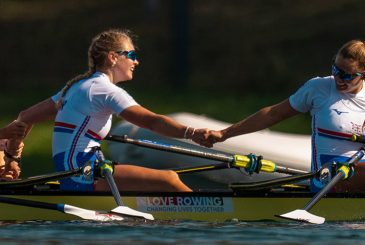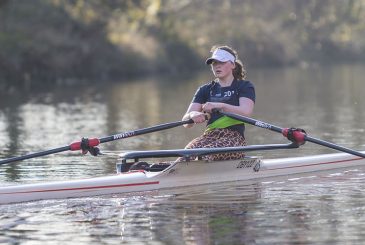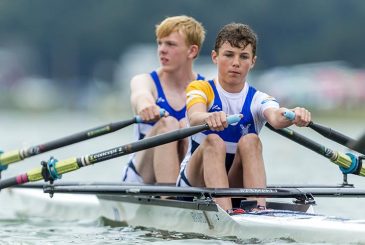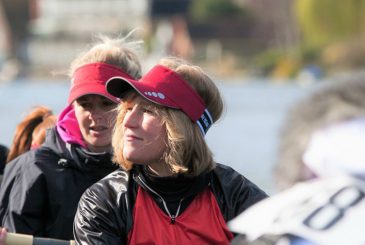Are you clear about exactly what you need to change or do to achieve your rowing goals? Alex Wolf from Science of Rowing, explains how to row better by ensuring you and your crews have ‘clarity of outcome’.
My experience is that while we may think we have clarity of outcome, we often don’t in reality. The result in sub-optimal performances. (Note: When I talk about performance, this is for any level of competition. This is an important point because what I share throughout this article applies across age-groups and levels of performance).
What do we mean by clarity of outcome?
Let’s break this down into two parts: the outcome itself, and then the clarity.
Outcome can be defined simply as the end goal. What do we want to see happen in the future? From a rowing perspective, this could be something around changes in the technical skill of rowing, the physical changes needed, or how to execute a race strategy. Often, we can describe the end goal but we can’t explain the more granular detail required to get there. When we describe a change required around the technical skill of rowing, what exactly are we referring to? Are we describing the outcome of the boat’s movement, how the rower executes the rowing stroke, or both? Are we explicitly describing the specific part of the stroke we are looking to change, and do we have an equally explicit technical model to refer this change against?
This is where clarity comes in. Clarity provides the explicitness of the outcome. It is specific and targeted which means it becomes less generic and more focused. Let’s look at a few examples of outcome, some without clarity, and some with.
| Outcome without clarity | Outcome with clarity |
|---|---|
| Increase length per stroke | Square blade entry and extraction to improve length per stroke |
| Improve catch position | Taller, more upright position at the catch |
| Increase leg strength | Increase concentric max force of knee and hip extension |
| Increase fitness | Improve central adaptations (heart and lungs) from fitness training |
As you can see from Figure 1, those with clarity have something very specific and targeted to focus on. Those without, are more general in nature. These general outcomes can be interpreted differently from one person to the next and do not provide an explicit direction to the training interventions that may be used. Instead, the more general an outcome becomes, the more general the training must be as it must cover all potential conclusions that maybe interpreted from the outcome. General training may be OK at specific times of the year, but it fundamentally does not improve performance (the act of rather than level) enough from the current state.
How to establish clarity of outcome
Step 1: Identify the changes to be made
Establishing clarity of outcome is a process of identifying all the things that may contribute to performance. For example, there could be two or three areas around the rowing stroke, such as blade entry, blade extraction, or the rockover position at the catch, which are important to focus on. There may be some physical development targets such as the contribution of knees and hips to produce force during the rowing stroke and the trunks capability to transfer force through the foot stretcher to the handle. Each of these need to be identified as individual areas of focus that need changing. They do not get lumped into one or two buckets of outcomes as they will then quickly become generic in nature. Focusing on each individual outcome preserves the specificity and allows you to target that with specific training interventions.
Step 2: Identify the impact of each change
Once all outcomes have been identified, we then go through a process of identifying the difference this change will make. This is hugely important and is often the forgotten part of establishing clarity of outcome. If we cannot determine what difference this will make in performance, we are either not clear what the end performance is, or we are identifying something we don’t know will make any difference to performance. During this process, working with a critical friend or colleague is often very helpful. They can ask questions and evaluate our thinking to get to the bottom of what we are really trying to achieve.
Step 3: Identify how to measure the change
Now that we have established the outcome and the difference this will have on performance, we then need to determine what we will observe or measure to give us confidence that these changes have occurred. Again, this is an area I often see missing. If we know what change we want to make and the difference it will have, we must determine how to assess the change. If we are unable to identify what we will observe or measure, or what we include with this area is vastly diverse, we probably don’t have explicitness in the previous two steps.
You should be able to list several areas which will give you confidence the change has occurred. Figure 2 provides an outline of the change model that we use at Strength and Conditioning Academy to help coaches establish these three areas to determine clarity of outcome.

Level 1 of the insight hierarchy describes the change only. Level 2 describes the change and the difference this change will make. And then level 3 identifies how this change will be observed and/or measured. This clarity of outcome process only works once we have level three insight. It is our responsibility to establish level 3 insight that will genuinely support the rowers we work with so that we can effectively create and track change. You can use the insight hierarchy across every area that we believe can change to help improved rowing performance.
As you can see from the example in Figure 2, we are not simply asking for things that we can measure but observations we can see. Over the last 20 years, I’ve witnessed and experienced the erosion of coaching observations as being a valid measure for change in the pursuit of measurement through instrumentation. Both are important and you should not excluded either when trying to observe changes. We also talk about confidence over certainty. Nothing is certain in this world, but we can have more confidence that something is likely to have changed based on the observations and measurements.
Summary
Part 1 has focused on describing what is meant by clarity of outcome, why it is important, and how we can go about creating this clarity. The insight hierarchy provided in Figure 2 is where I always start, whether working with athletes or supporting coaches to establish their own clarity of outcome. To experience how this works in your world, consider one rower you are working with. List all the areas you feel could change to improve rowing performance (the act of and not the level of). Select one of these areas identified and work through the process of:
- The change required is… (identify the specific change required)
- So that… (the difference this will make on performance)
- And we will know we have achieved this when…. (describe all observations and measurements that will alter when the change has been achieved).
This process will start to develop our coaching practice. In part 2, we will explore what we do with this clarity of outcome. We’ll also look at how to select the most effective training methods to achieve the intended outcome.
British Rowing member offer
All British Rowing members can get to a 20% discount on Science of Rowing subscriptions. To get your code, just log in to the British Rowing Membership system, then go to Member Details>Member Benefits.
Photo: Nick Middleton










